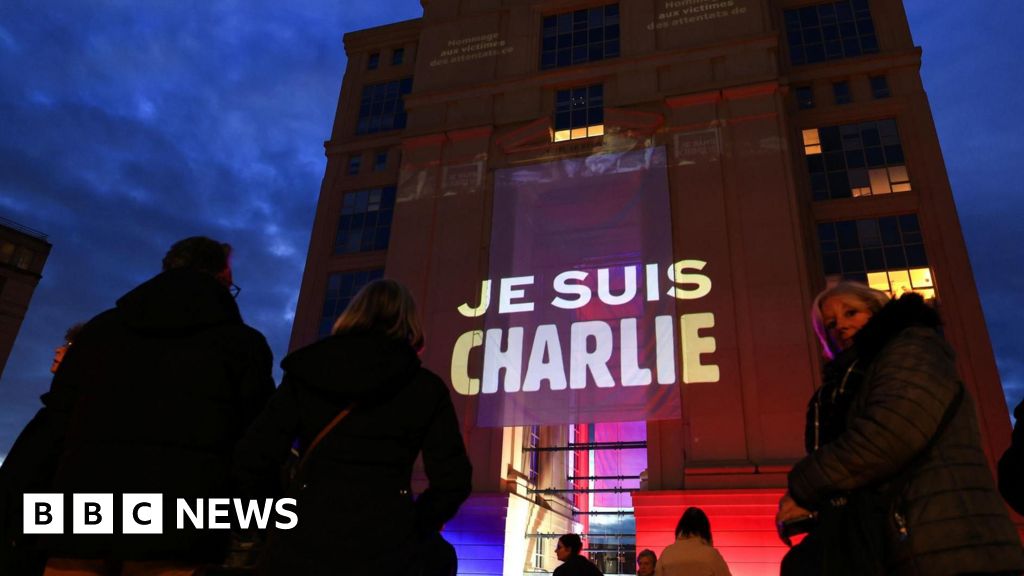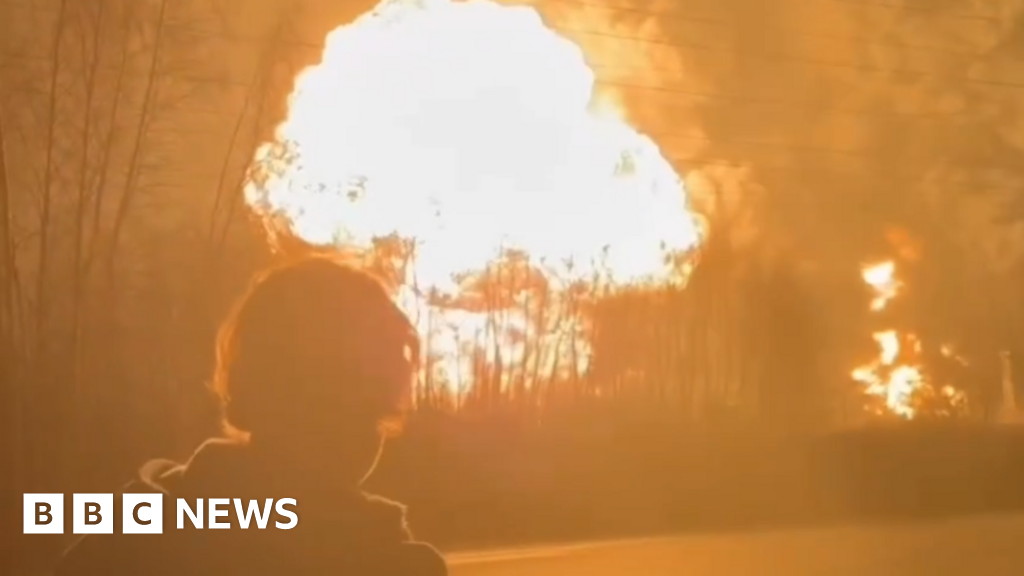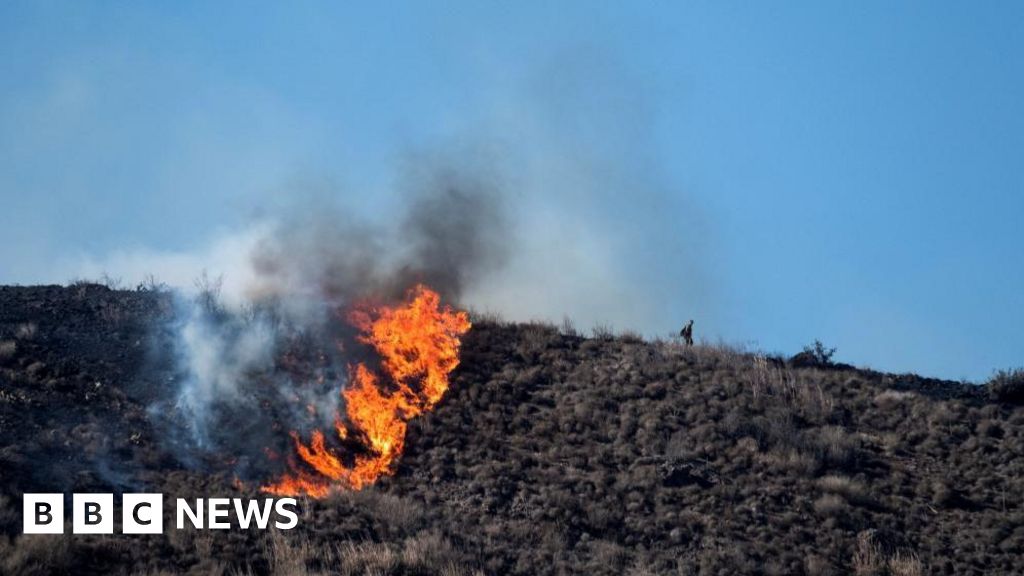ARTICLE AD BOX
Watch: On site of blast crater metres from apartment block
By James Waterhouse & Toby Luckhurst
in Kyiv
Russia's Vladimir Putin vowed to increase attacks on Ukraine - now Kyiv is realising what he meant.
On Tuesday night President Volodymyr Zelensky said Russia had launched 500 missiles and drones against Ukraine in just five days.
At least 32 people have died in Ukraine's capital in that time, 30 of them in one attack - on 29 December, when Russia launched one of the largest ever aerial attacks of this war.
And it's not just the capital. Nearly 60 people have been killed nationwide, with Kharkiv in the northeast, Zaporizhzhia in the south, Odesa on the southern coast and even Lviv in the far west all suffering strikes.
Since launching its invasion Russia has never stopped attacking Ukraine by the air, but this latest series of strikes marks a deadly escalation.
What does this new phase in the war mean for Ukraine? And what's the plan behind Russia's renewed aerial assault?
Changing tactics
Ukraine has not seen attacks as heavy as this since the start of Russia's full-scale invasion.
And what's different is not just the size of the strikes - it's the tactics.
The attack on 2 January lasted for six hours in Kyiv. The Russians launched a wave of drones at the capital. Ukraine's air force said it was able to shoot down all 35 of them.
But this was followed up with missile attacks, using different kinds of weapons in a bid to overwhelm and break through the city's defences.
Missiles have struck the very heart of Kyiv in these last five days, for the first time in months.
"They're always trying to find a better way to break our air defence systems and make their attack more efficient," Oleksandr Musiyenko at Ukraine's Center for Military Legal Research told the BBC.
Image source, EPA
Image caption,Missiles struck the very centre of Kyiv in the last five days, for the first time in months
That means using different kinds of missiles - hypersonic, cruise, and ballistic - but also firing these missiles along different routes. These weapons can change direction in the air over Ukraine, causing further headaches for air defence.
Russia is also varying its focus. On 29 December, it aimed its weapons at cities across the country - on 2 January, just at Kyiv and Kharkiv.
"The Russians tried to concentrate their attacking power… and just aim at one or two cities," Mr Musiyenko said.
The way Russia prepares for these strikes is changing too. Ukraine's intelligence service, the SBU, reported on Tuesday it had found and deactivated "two robotic online surveillance cameras" that it says were hacked by Russia to spy on Kyiv's defences and scout out targets.
It's not clear how long Russia can keep carrying out these large scale strikes.
Analysis carried out by Ukrainian media suggests the attack on 29 December cost $1.273bn (£1.01bn) alone - while the attack on 2 January cost an extra $620 million (£491m), according to Forbes magazine.
Ukraine had feared ahead of the winter that Russia was stockpiling weapons for large-scale attacks.
Analysis published in Le Monde quotes Ukrainian officials who said Russia still has in its stockpile around 1,000 ballistic or cruise missiles, and is able to make around 100 more per month - such as Kalibrs and Kh-101s.
But Mr Musiyenko says that Ukraine has also been preparing.
Ukraine uses German-made Gepard anti-aircraft guns to tackle incoming drones, while Soviet-era Buk systems are used against cruise missiles and US-made Patriots against hypersonic Kinzhal missiles.
Image source, EPA
Image caption,German-made Gepards are used to shoot down Russian drones
"We divided our systems for different types of threats," he says, though of course this means relying on the West for ammunition and maintenance. "So of course it's very important for us to get this support."
That is a key point now for Kyiv.
With US aid bogged down in political infighting and the EU failing to produce even half of the one million artillery shells it promised by the end of 2023, Russia may well be launching these vast attacks at a time when Ukraine's supplies could be drying up.
Additional reporting by Anastasiia Levchenko and Hanna Chornous

 1 year ago
21
1 year ago
21








 English (US) ·
English (US) ·